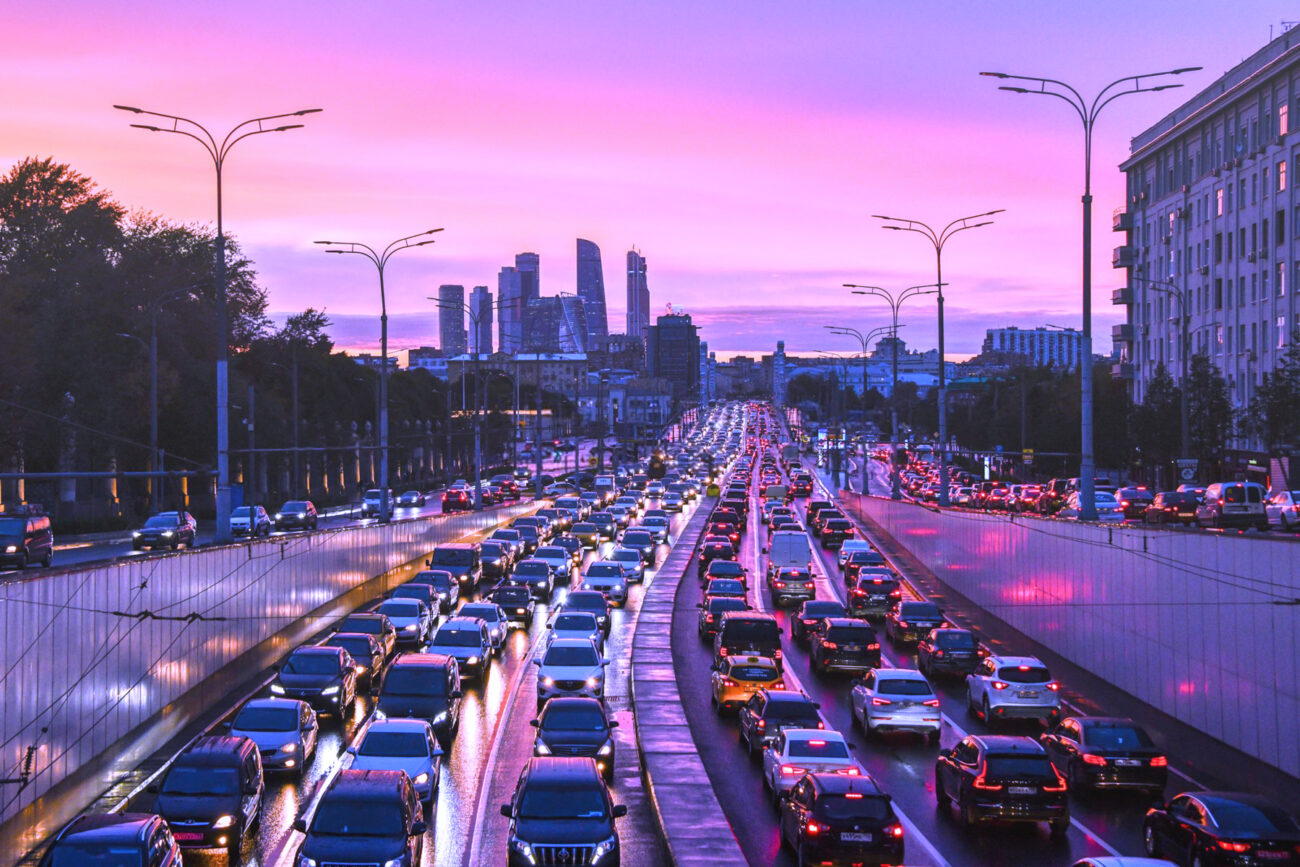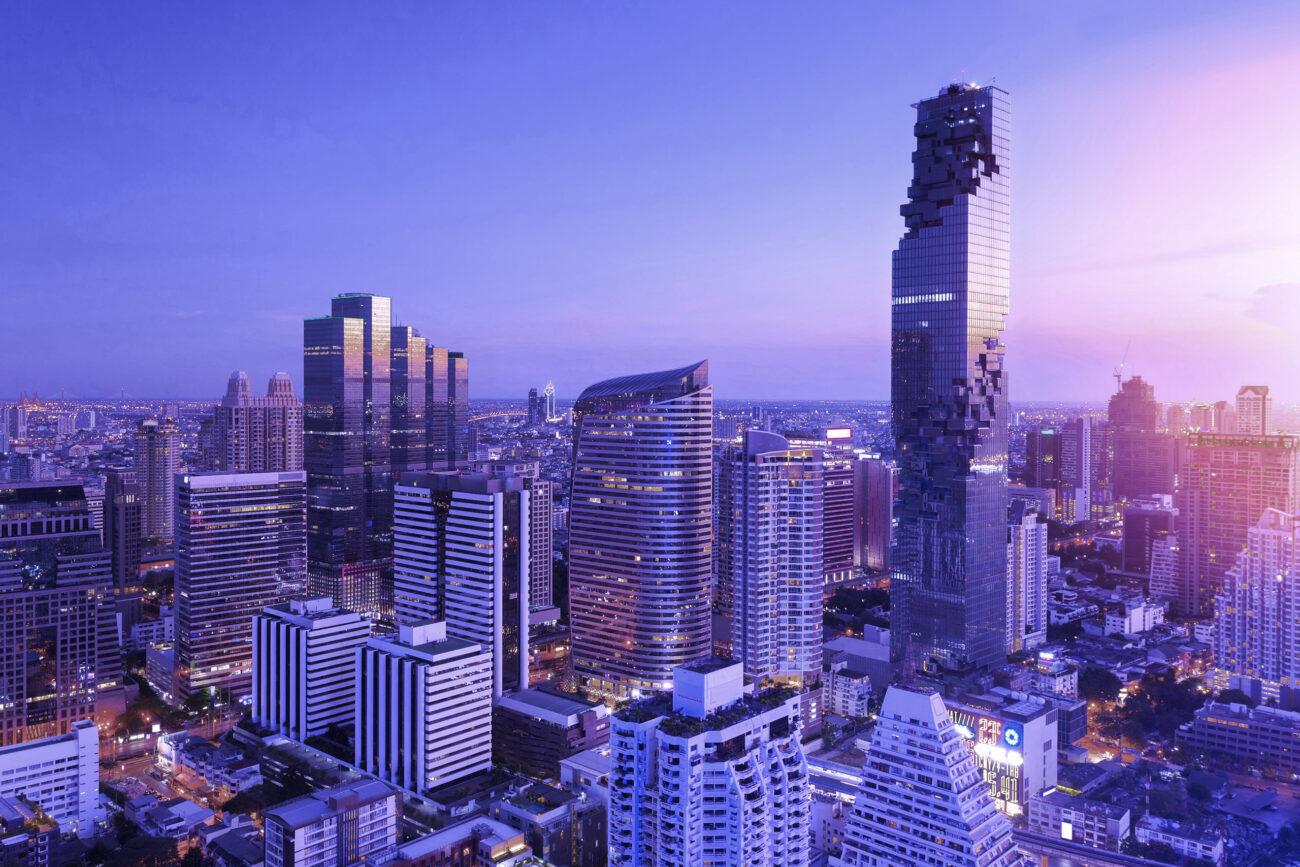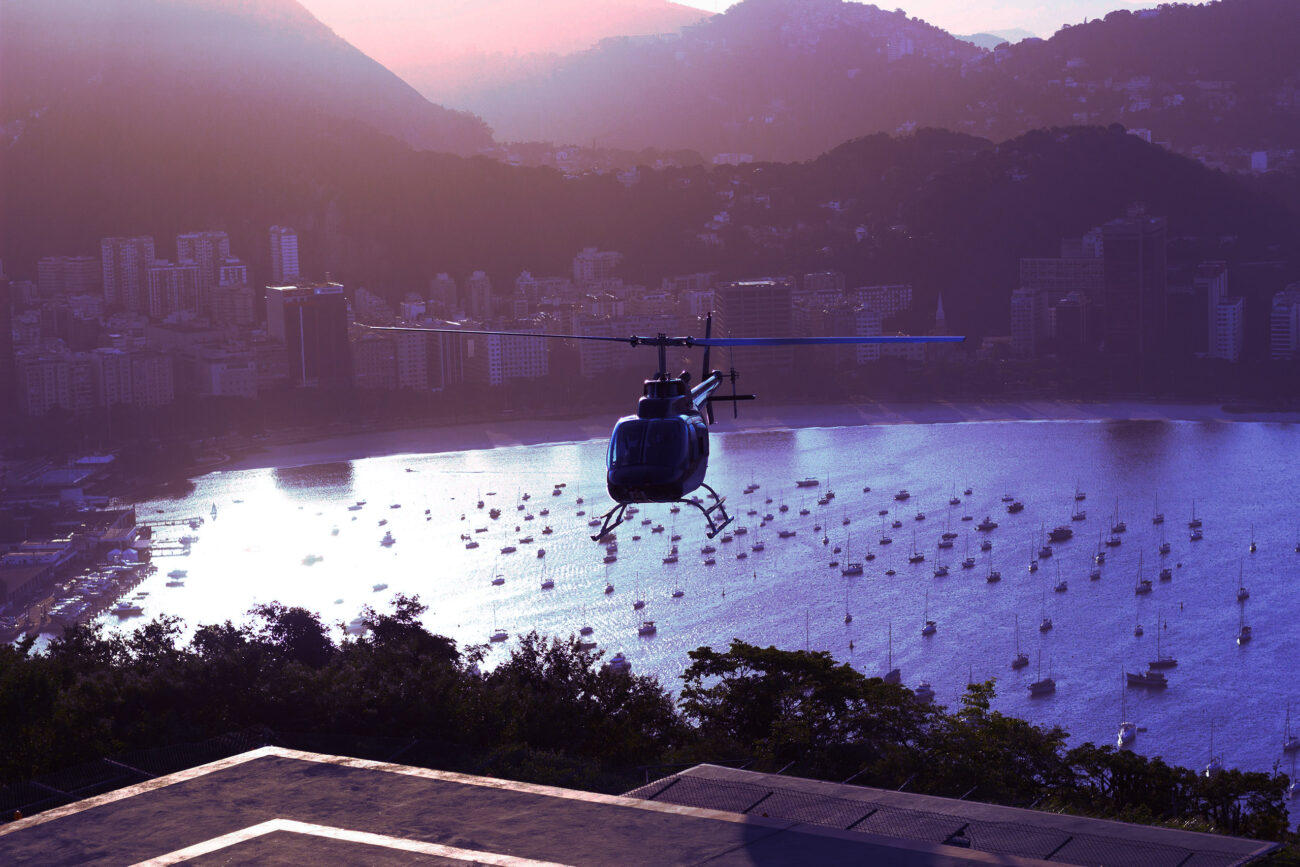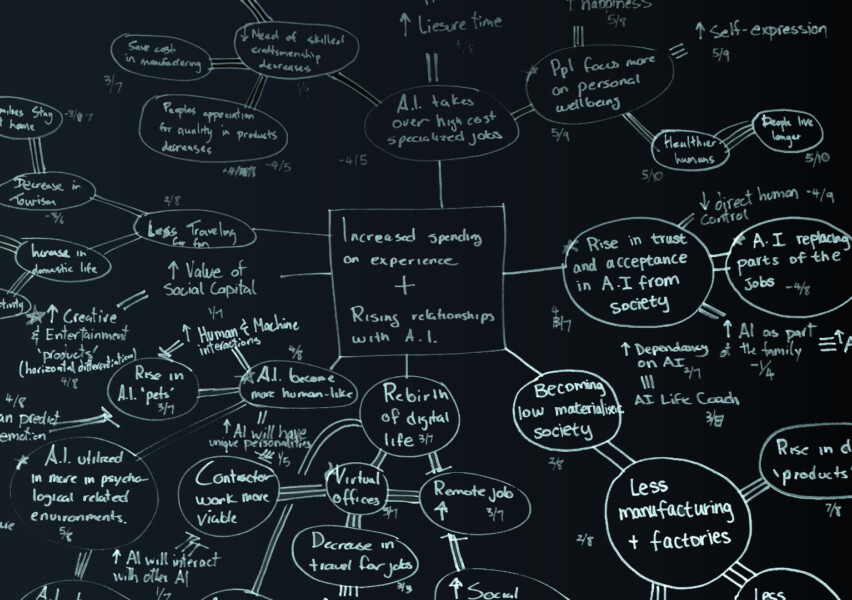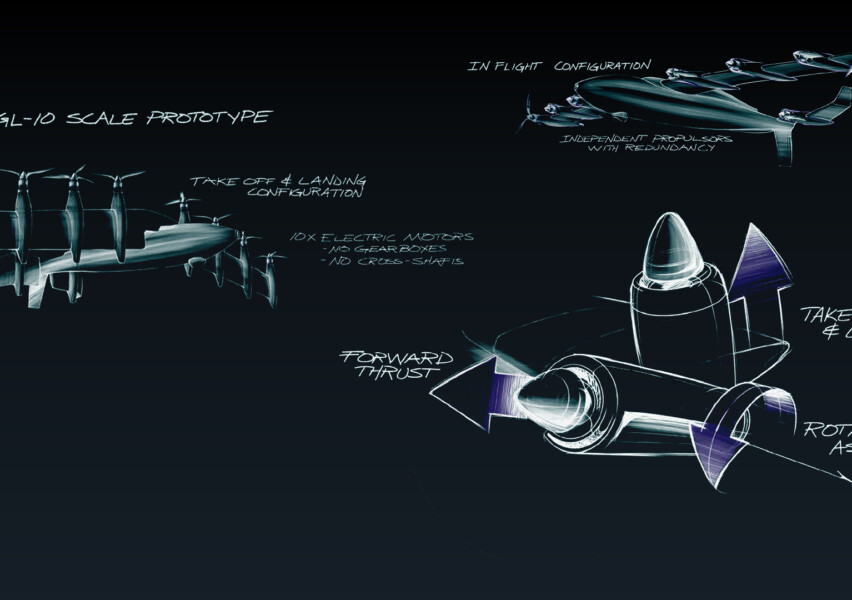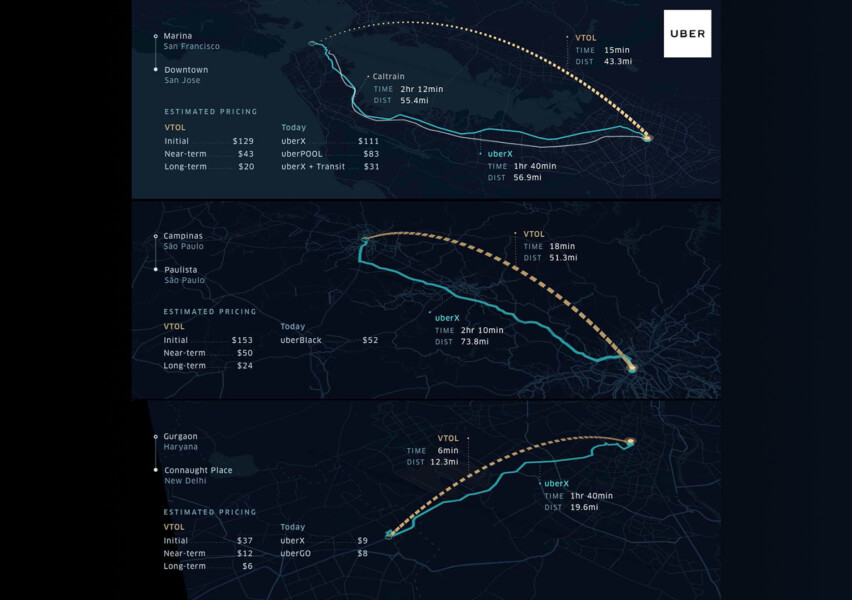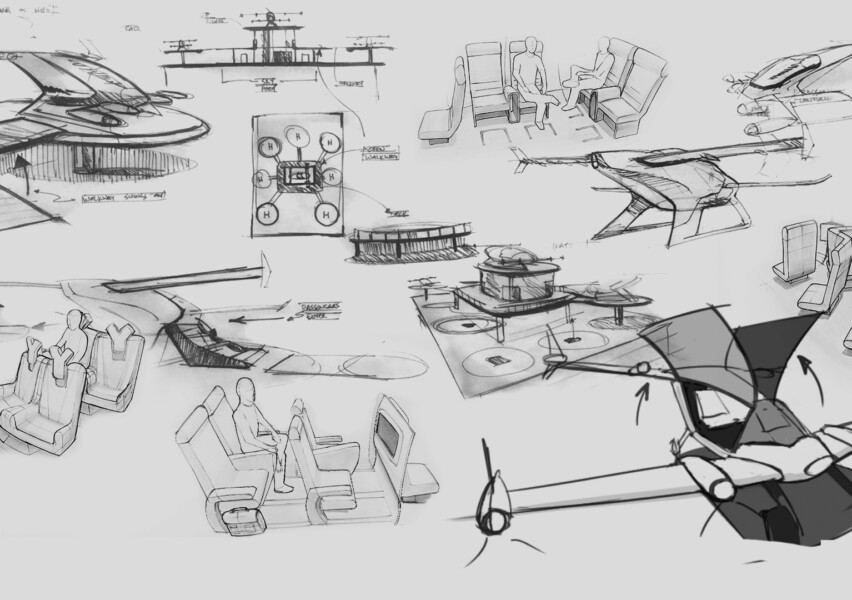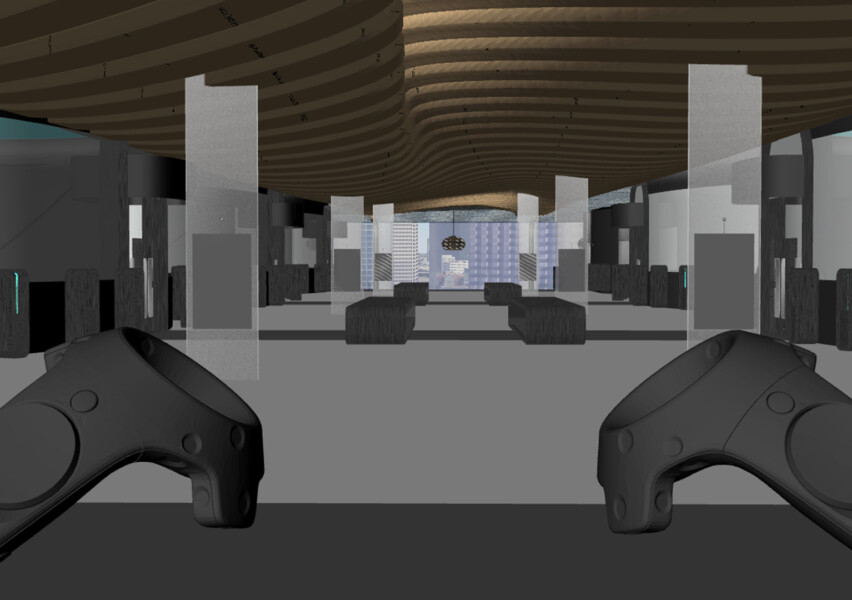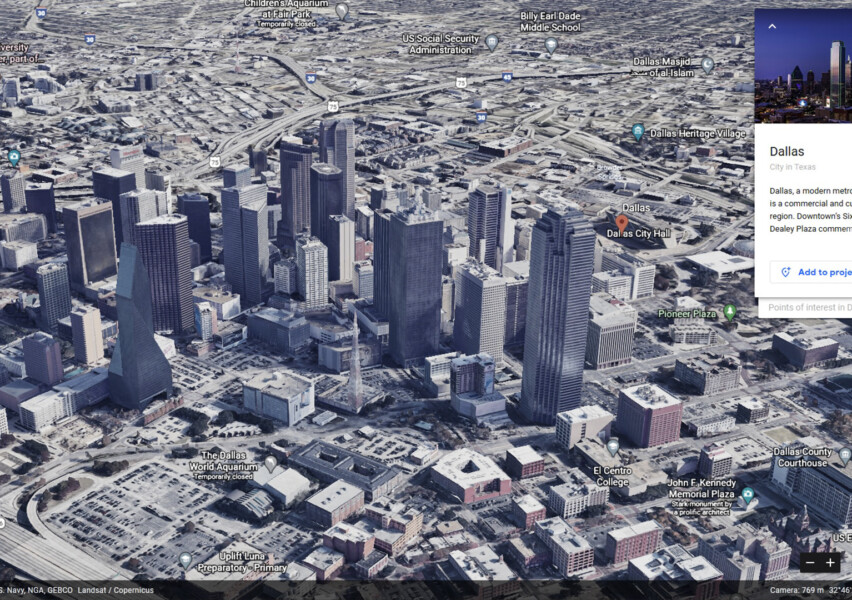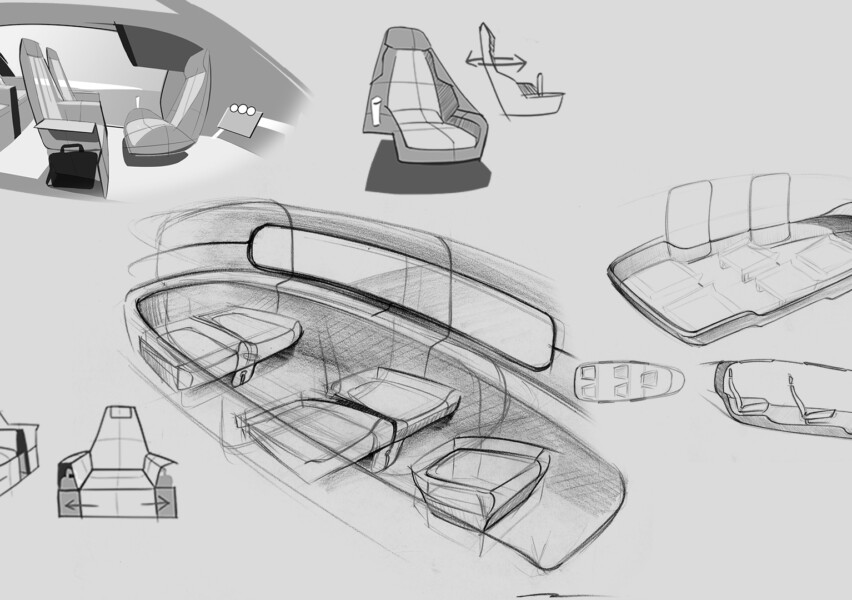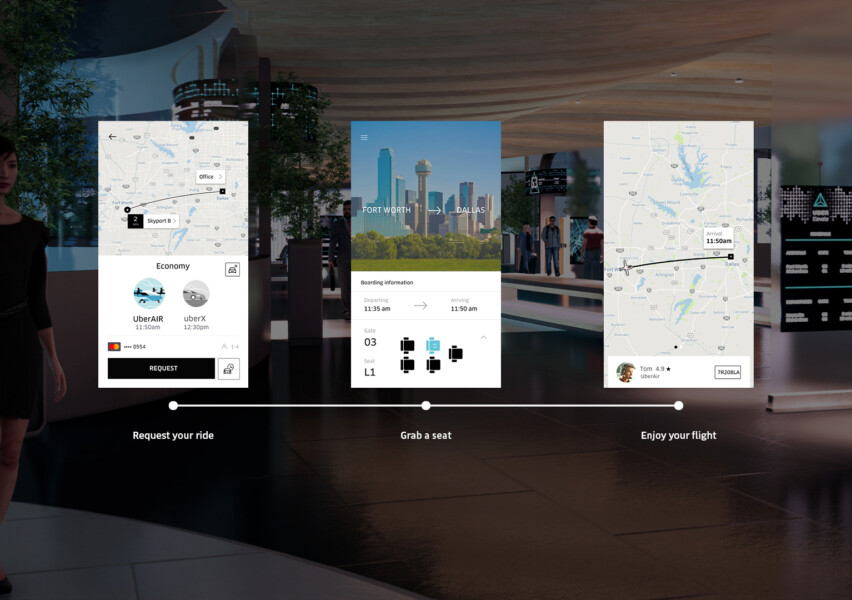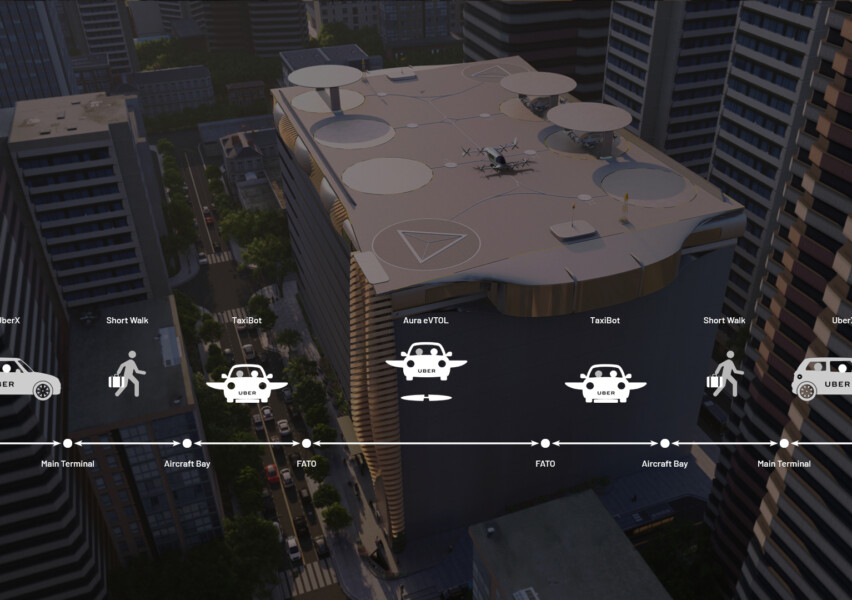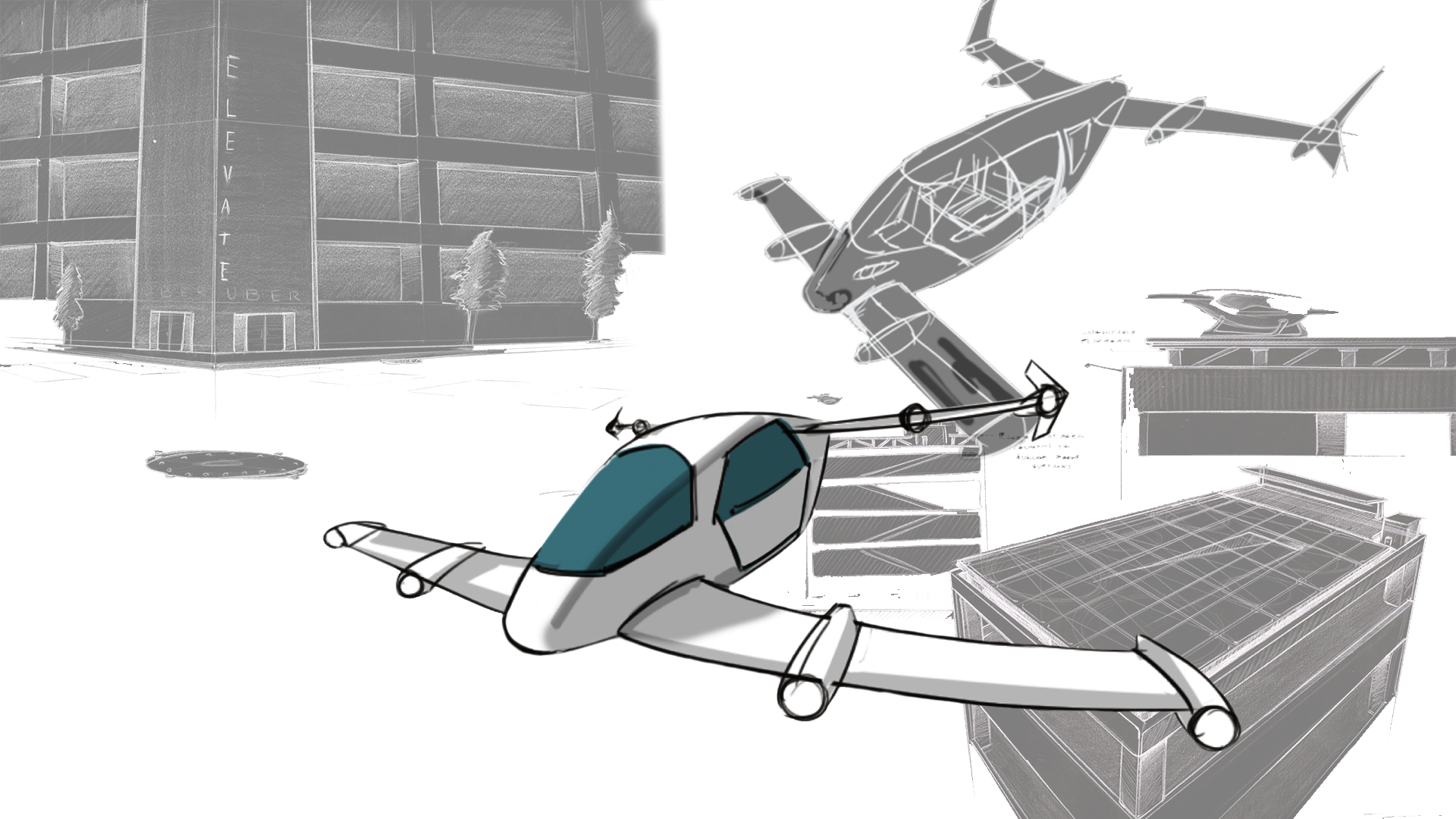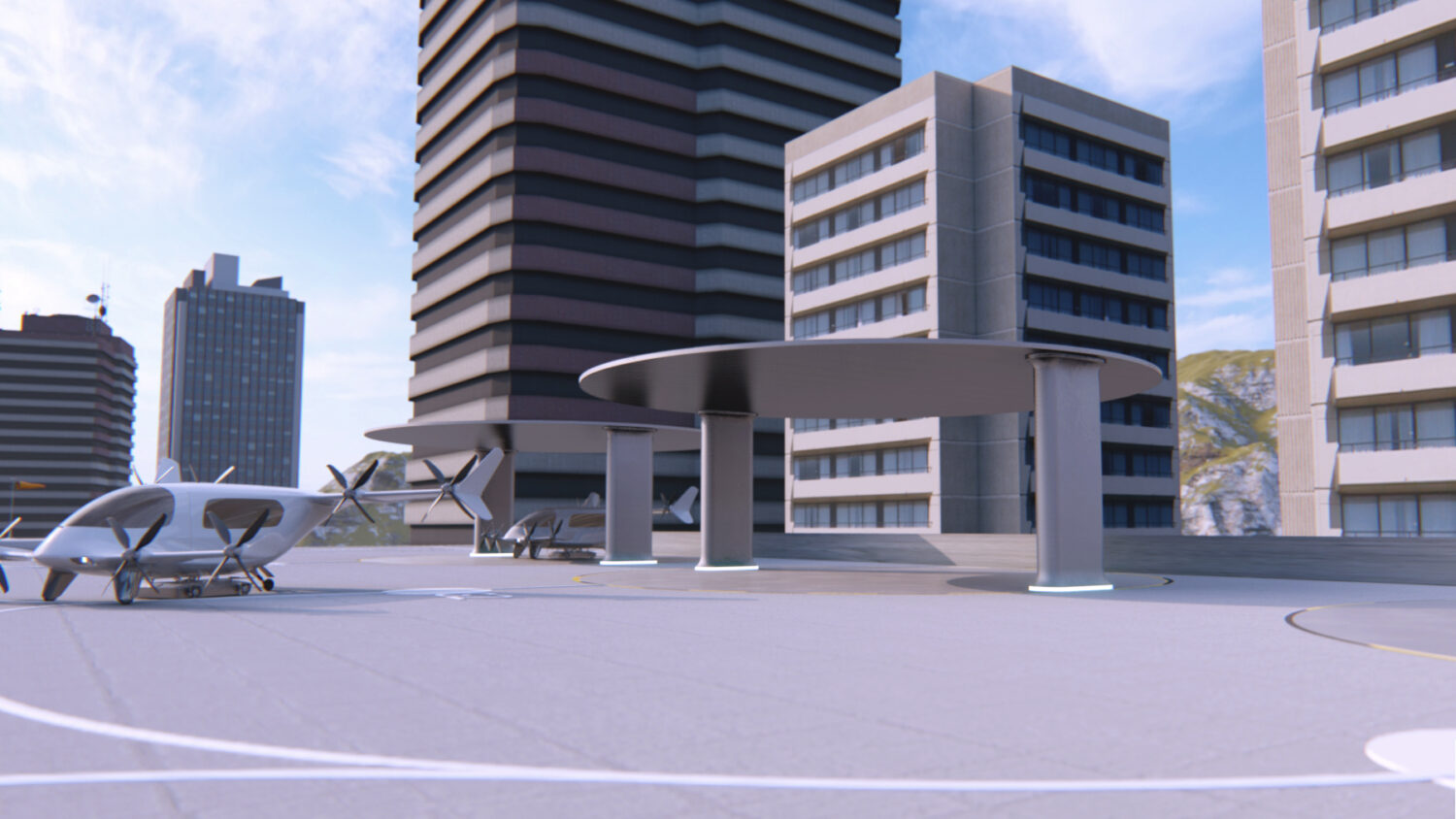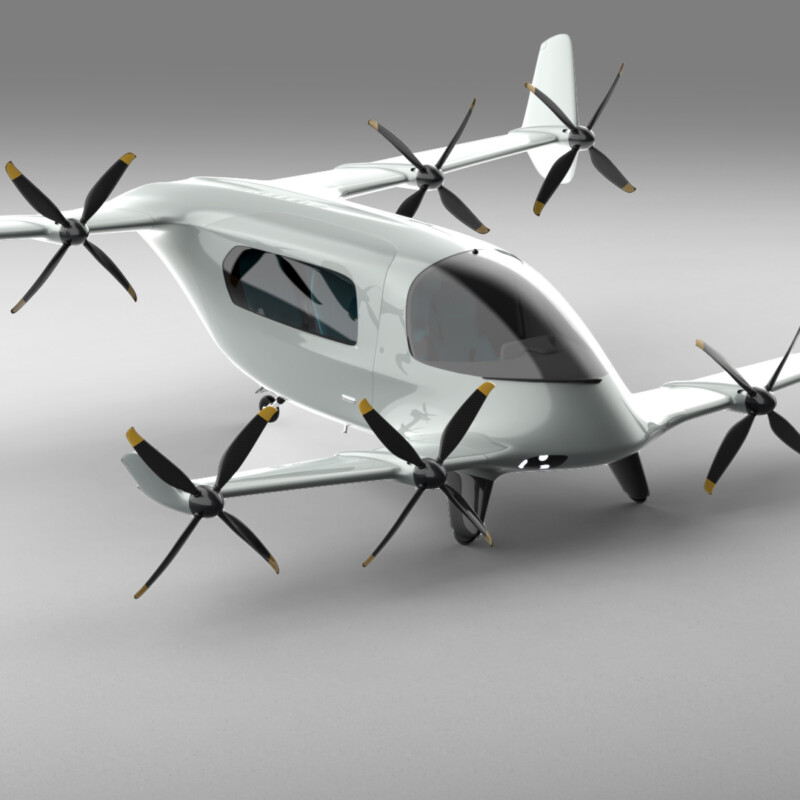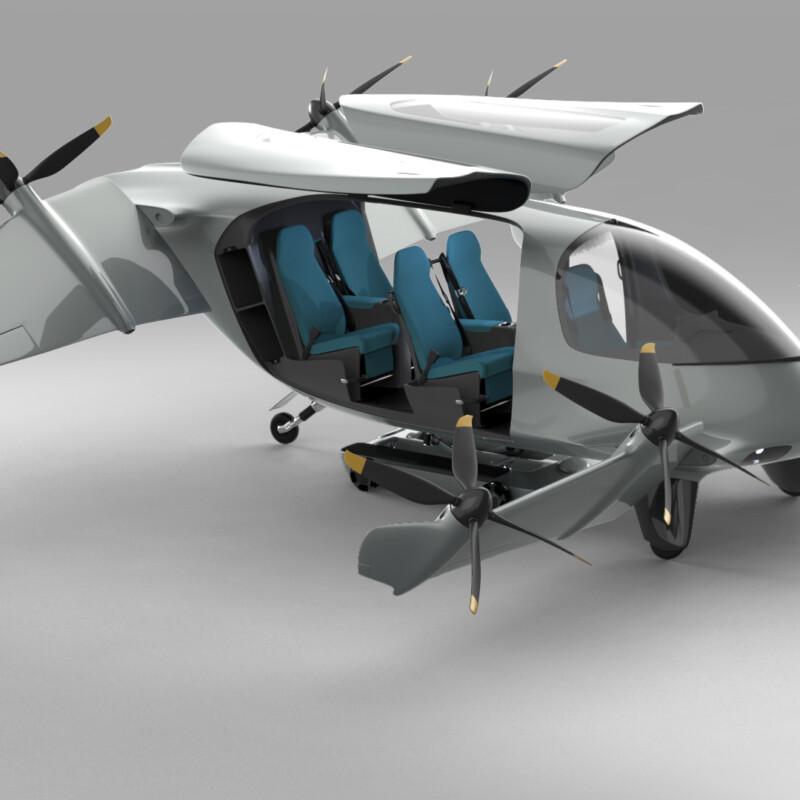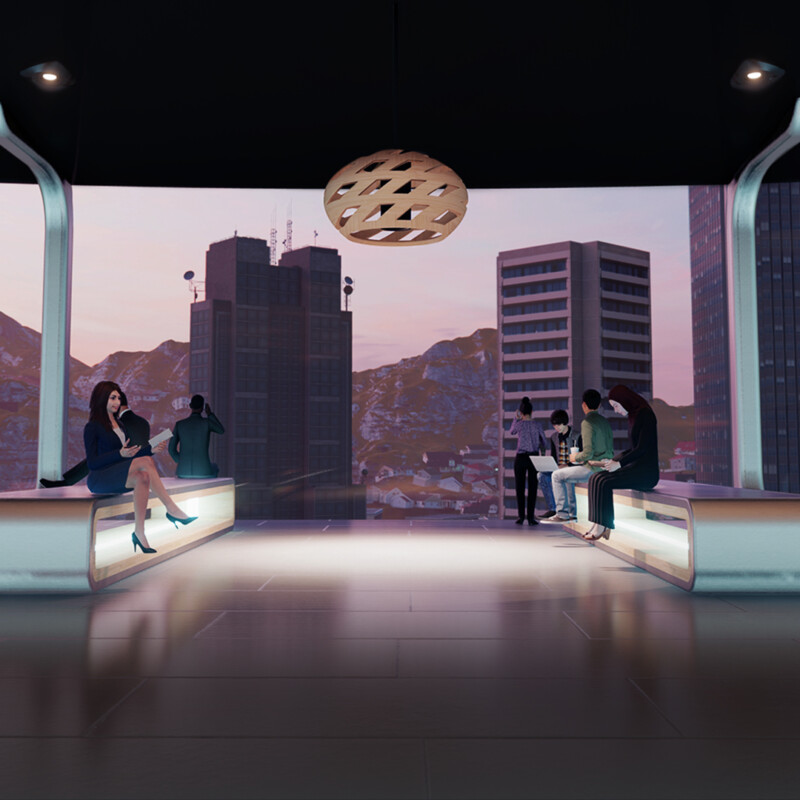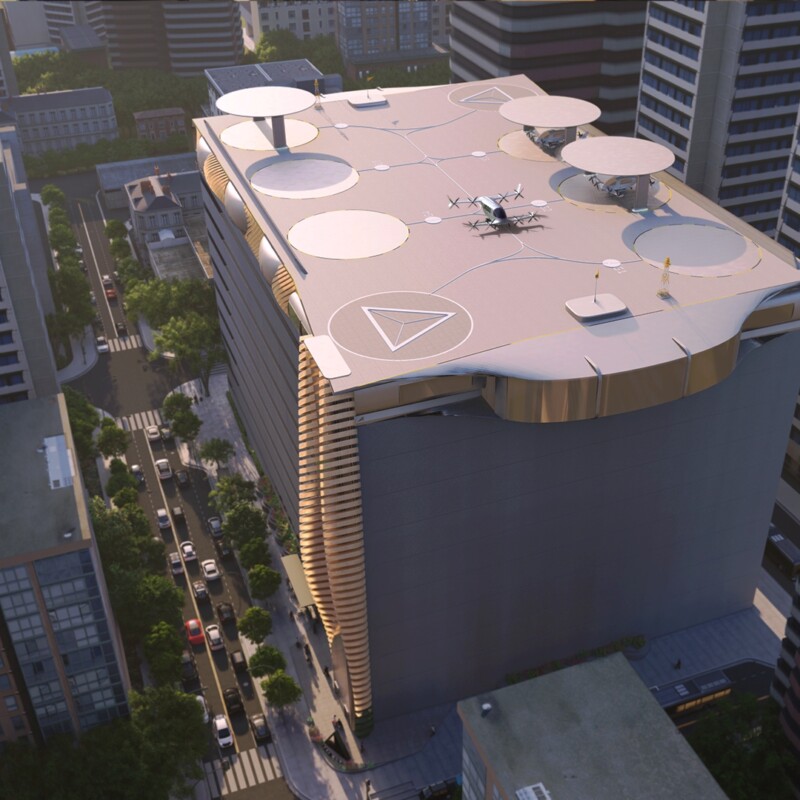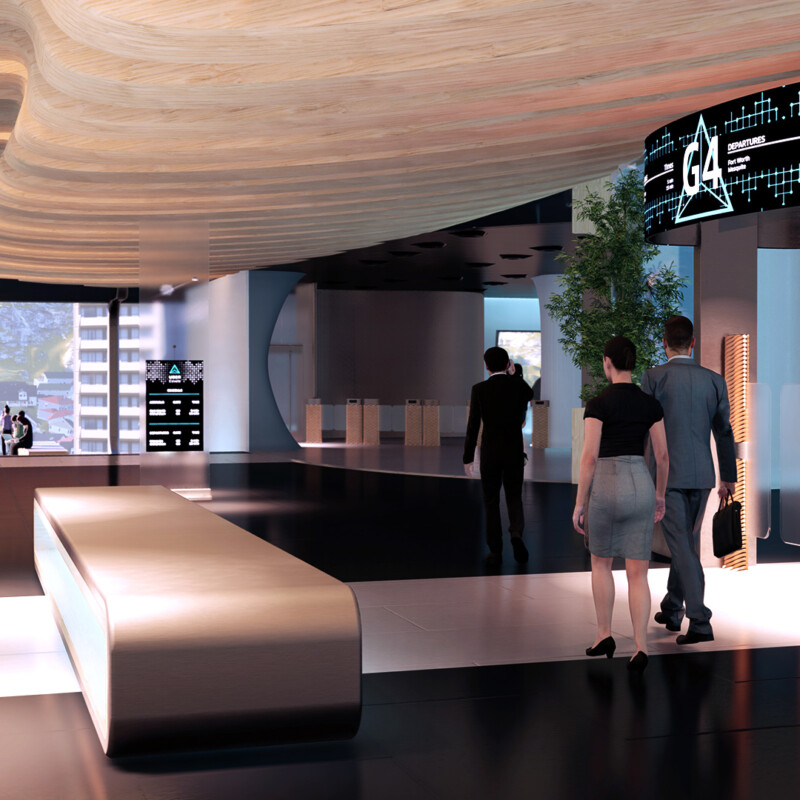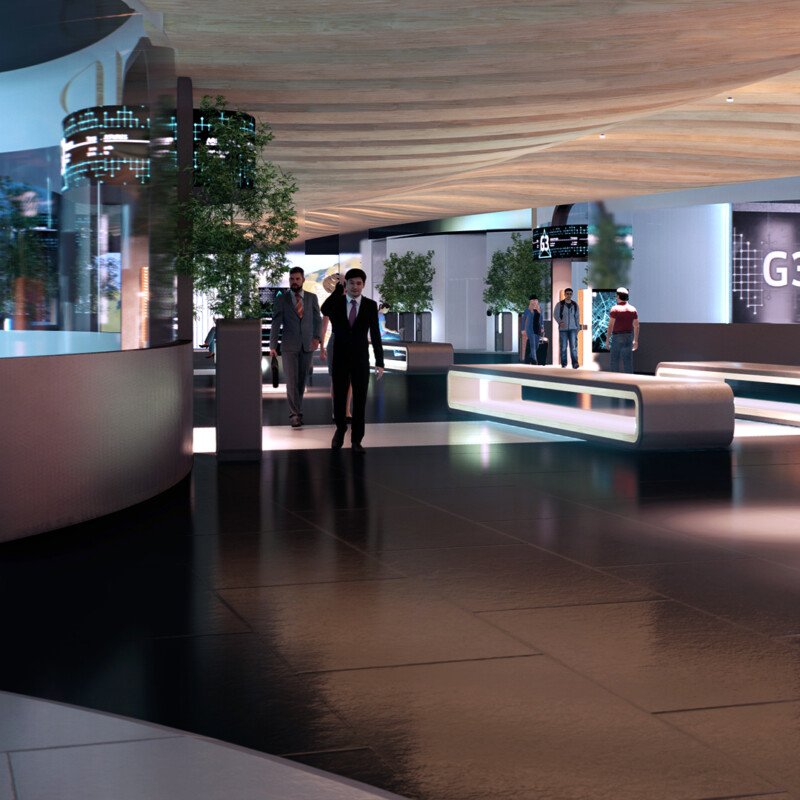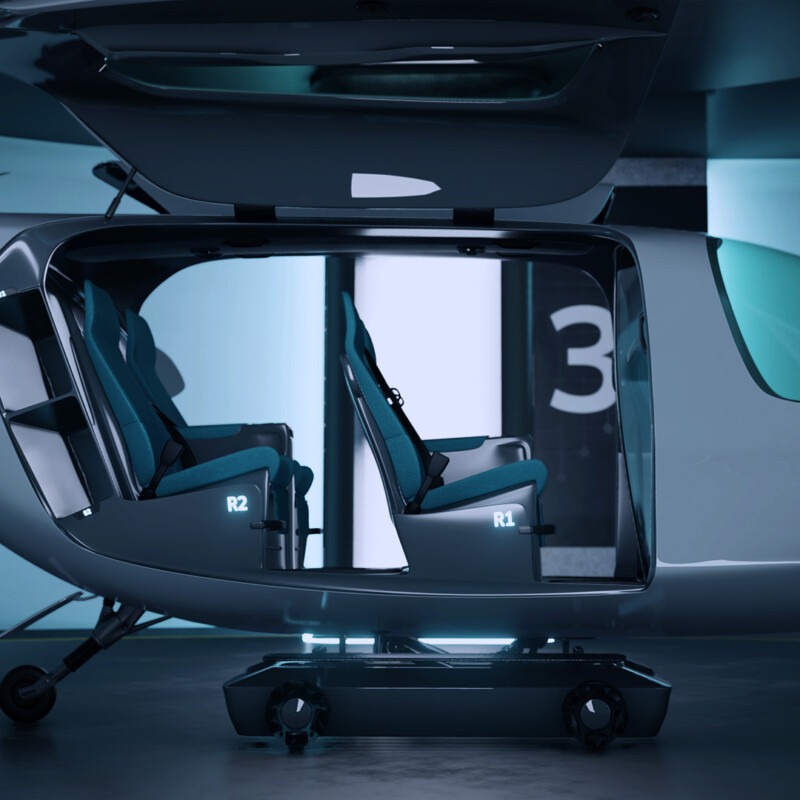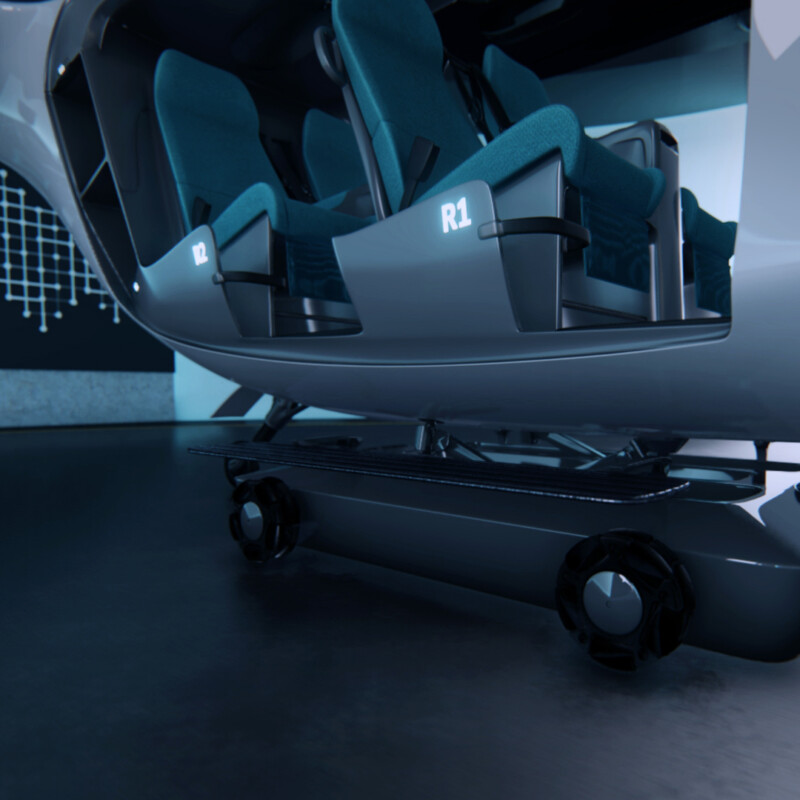Client
- Uber
Date
- August - December 2017
Key Deliverables
- Research Insights
- eVTOL Aircraft Design
- Airport System Design
- User Experience Design
My Team
- Erika Woo - Grad Industrial Designer
- Raul Reyes - Grad Industrial Designer
- Raj Desai - Undergrad Product Designer
- Joyce Chiu - Undergrad Interaction Designer
THE MISSION
Uber is an American multinational ride-hailing company from San Francisco, CA that offers mobility services in over 785 metropolitan areas across 63 countries. Founded in 2009, Uber has 110 million active users and generates $14.2 billion in revenue per year. Since 2014, their transportation network has grown from ride-hailing, into micro-mobility, food delivery and helicopter services. In 2016, Uber announced a new initiative called Uber Elevate and published a comprehensive white paper, that breaks down the technical feasibility of flying-cars, with the intention of kickstarting an air taxi service in the near future.
In an effort to envision the possibilities, the design team at Uber approached me and my colleagues to form an educational partnership. We formed teams and were challenged to conceptualize an end-to-end experience with new aircraft, airports and app designs.
"How might Uber create an end-to-end air taxi experience?"
Exploring the possibilities
The key to designing an experience around a paradigm-shifting technology, is to use parallel societal changes for extrapolating the future landscape. We used this relational perspective of the future to uncover new possibilities and untapped opportunities to be explored in the ideation phase.
In an effort to re-imagine what an air travel experience could be, we started our exploration with the vehicle cabin and outwards from there, eventually encompassing the whole system.
With the goal of designing passenger vehicles and spaces, it’s prudent to evaluate concepts in realistic scale. We used virtual reality as a valuable tool for rapidly mocking up and testing both aircraft and airport designs in one-to-one scale simulations.
To further ground our concepts in reality, we did some site planning at the proposed launch city, in downtown Dallas, to guide building constraints and system logistics.
Designing the concept
The key to unifying various perspectives in a design team around a singular vision, is to establish an agreed upon set of value criteria. Our guiding principles were safety, efficiency and connectedness. To keep the entire team on the same page, we designed various system elements separately, but conducted design reviews together.
As part of the Uber platform, we chose to leverage their expertise in efficient booking and traveler tracking, to sync both physical and digital experiences together. This enabled us to simplify the user flow into a smooth and continuous experience.
With the stated goal of becoming a multimodal mobility platform, Uber has begun acquiring and integrating micromobility and public transportation into it’s offerings. To accommodate the wide variety of passenger needs and destinations, we approached our system design not as a standalone experience, but rather as a “leg” of a potentially bigger journey.
The final step in sharing our vision for an eVTOL travel experience, was tying it all together into a live-action user journey film.
THE RESULTS
Introducing Aura and Skyport, a complete eVTOL transit system on the Uber platform. Aura, is a tilt-wing aircraft that seats four passengers and a pilot. With vertical-takeoff and landing capabilities, it’s designed to fly to any city within 60 miles, in only fifteen minutes of flight time. Skyport, is the future rapid transit hub for cities and metropolitan areas. By retro-fitting existing parking structures with a terminal and flight deck, any city can join the Uber Elevate network and unlock the skies.
